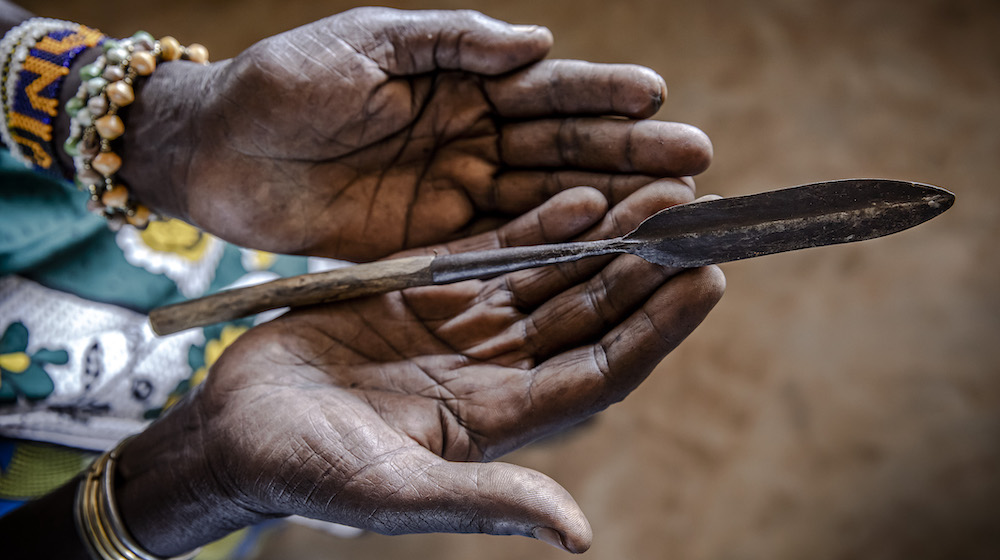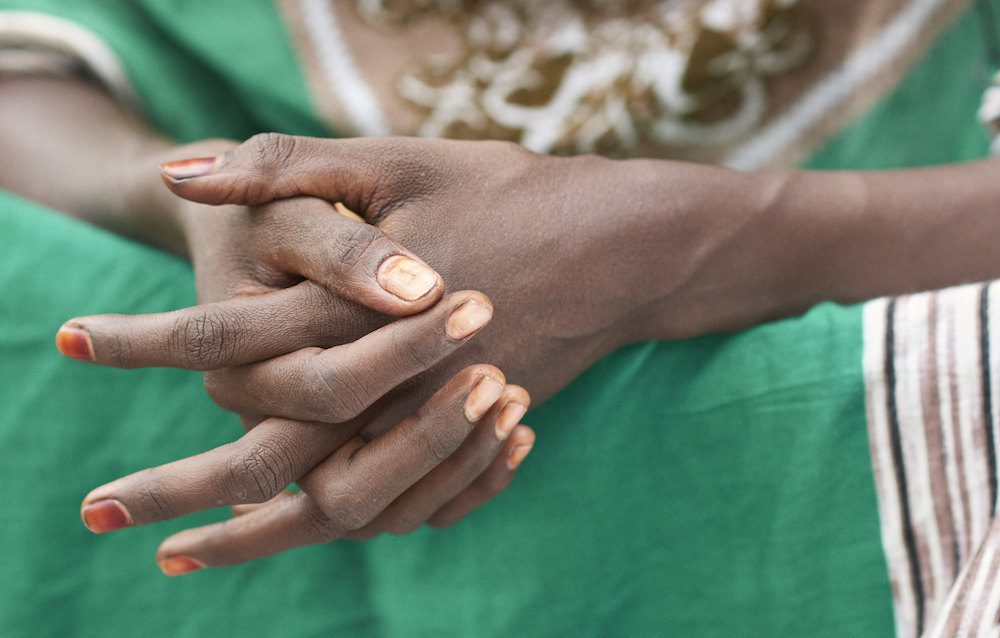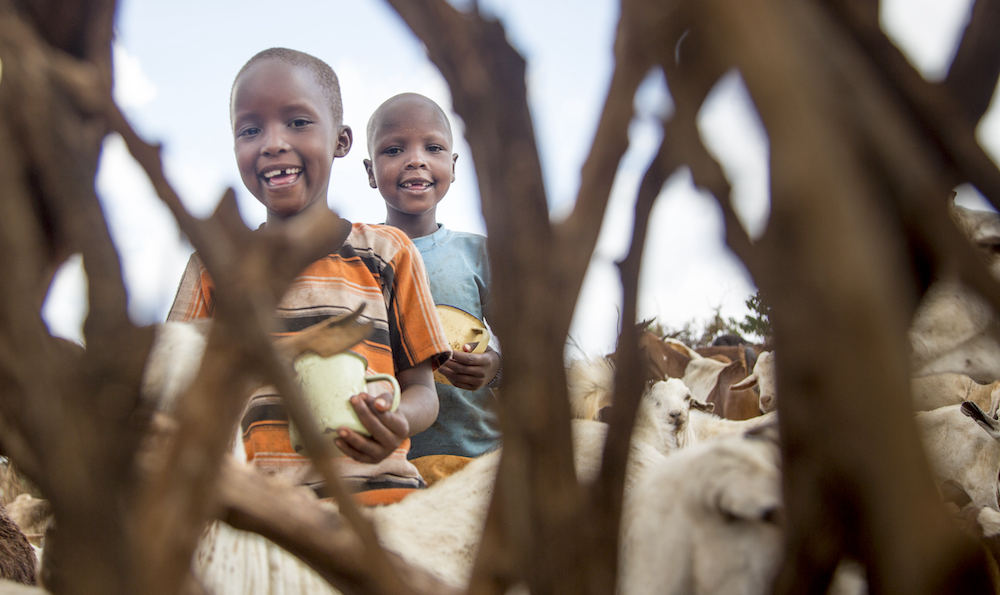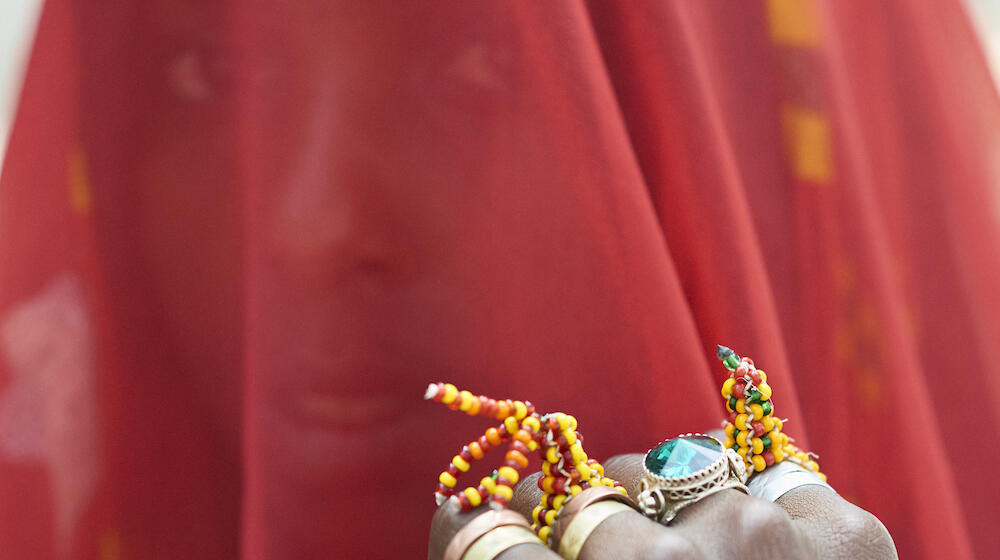UNFPA-UNICEF Joint Programme on the Elimination of Female Genital Mutilation is acelerating efforts to end FGM
Gloria Chelangat was born and raised in a community with a deep-rooted practice: female genital mutilation (FGM).
The procedure, also called female circumcision, involves removing part or the whole of a female's external genitalia for non-medical reasons. It is internationally recognized as a harmful practice and a form of gender-based violence.
At the age of 12, Ms. Chelangat considered running away from home – and out of the country – to evade the torturous experience that many young girls like her dreaded but were condemned to.
But it was easier said than done.
"I thought of escaping to Rwanda, but at that time, I did not even know its direction!" Kapchorwa-born Ms. Chelangat, who is now 26, remembers her impracticable scheme of more than a decade ago.

The only world Ms. Chelangat was familiar with were the rural surroundings of her native Kapchorwa district in Uganda's Sebei region, where she had lived all her life. This also meant that she had heard a lot about FGM.
To date, nowhere in Uganda is it practised more than in Sebei and Karamoja regions, both located on the eastern side of the country.
FGM is outlawed in many countries today, including Uganda, but communities continue to practise it, mostly underground – in bushes, forests, caves and even across the border.
The procedure was ubiquitous during Ms. Chelangat's childhood, and gender-related attitudes only fuelled it the more.
I was terrifyingly despised, insulted and abused for simply being a girl.
Growing up in a family of five girls and one boy, she recalls being "terrifyingly despised, insulted and abused for simply being a girl" every time she and her sisters stepped out of their house.
Uganda's southwestern neighbour had randomly popped into her head as a potential destination for her naive, desperate escape plot yet she knew nothing about Rwanda.

In a typically patriarchal environment, the one boy in Ms. Chelangat 's household was considered more useful than his five sisters combined. As a result of such stereotypical attitudes in that part of Uganda, many underage girls were offered for early marriage by their parents or guardians. And to ready them for that illegal transition, the adolescent brides-to-be had to painfully undergo FGM.
Growing up, Ms. Chelangat was tormented by constant reminders of this fate at every turn.
"My grandmother and some of my aunts had already been cut, so it [FGM] is something that seemed normal and inevitable for the rest of us," she says. "It was visible, and the more you thought about it, the more you would get tortured."
'No-one condemned FGM - so I did'
When it dawned on an adolescent Ms. Chelangat that escaping to a world alien to her was out of the question, another lifeline arrived just in time: school.
She was sent off to neighbouring Kween district to begin secondary school life, an adjustment that offered her relief from unceasing thoughts of facing the blade.
In fact, being in school emboldened her to speak out against FGM, using music, dance and drama as a platform to inspire other fellow young people to join forces with her.
"Stories about FGM were many at school, but there were no activists. No-one came to say that this practice should stop. It seemed normal. So I stepped in," she says.
No-one came to say that this practice should stop. It seemed normal. So I stepped in.
Ms. Chelangat and her colleagues carried the same enthusiasm back home. They formed a group they named Kapchorwa Active Youth Association (KAYA), under which they conducted community outreaches to sensitize people on the cons of FGM.
During school holidays, they would team up and move into communities to deliver their messages against FGM – using plays, poems, music and dance.
"As we spoke out and lamented about FGM in our plays or skits, we were confident that the community audiences got to understand that this [FGM] was not right.
"We would then pause and ask them questions: 'Why do you think FGM is wrong?'....'What do you think should be done?'...Their views mattered," says Ms. Chelangat, who returned to Kapchorwa from Kween to complete her secondary education.
By being active in "preaching" against FGM, she not only survived being cut herself, but also become the driving force behind a movement of young, bold Ugandans committed to helping end FGM in their own communities.

Beyond Kapchorwa and Uganda, the rest of the world is also racing against time to eliminate FGM, preferably by 2030.
Campaigners say its prevalence has declined globally over the past 25 years. But there is still more work to be done to achieve target 5.3 of the Sustainable Development Goals (SDGs).
The UNFPA-UNICEF Joint Programme on the Elimination of FGM, created in 2008 to accelerate efforts to end FGM in a phased approach, is changing gears in its ambitious quest to eliminate the harmful practice in the 17 countries where it is implemented.
It is now working to empower women and girls "to claim their right to bodily autonomy" as well as promote "transformative changes in gender norms and power relations to end FGM once and for all".
Already, the programme has made giant strides in the past decade, during which the focus has been on preventing medicalization and cross-border FGM.
The argument has been that medicalizing the practice (having medical professionals perform FGM) does not make it safer, as it still removes and damages healthy, normal tissue and interferes with the natural functions of a female's body.
The Joint Programme's annual report for 2021, which is titled Delivering and sustaining in the new normal and was released in September, presents encouraging numbers.
For instance, the report says that the proportion of medical and paramedical associations declaring that FGM performed by health professionals is unethical increased from 73 in 2020 to 77 in 2021.
And this was quite telling in the context of service provision.
According to the report, more than half a million girls and women accessed comprehensive FGM prevention and response services in 2021: 422,700 received health services, 76,882 were connected to social services and 16,106 benefited from legal services.
On top of that, the number of community leaders in the countries supported by the Joint Programme that have publicly denounced the practice has "radically increased".
The 2021 report reveals that more than 3.4 million individuals across 4,475 communities engaged in public declarations of FGM elimination – despite the COVID-19 pandemic.
The number of girls prevented from being cut rose from 16,251 in 2018 to 216,853 in 2021, thanks to surveillance systems established to protect girls from a practice that potentially has devastating health consequences.
Having gone through three phases already, the Joint Programme's phase four is underway, riding on a "vision to create a world where every girl and women has a voice, choice and agency".
The programme, which also supports Uganda's effort in eliminating FGM, is looking to disrupt gender-discriminatory norms and practices.
"The global effort to eliminate FGM will require support from different corners, however, not just technical but also financial inputs to sustain continuous momentum to eliminate FGM," says the report.
"As the world witnesses various humanitarian crises and competition for resources, the focus on FGM must not diminish."
For 12 years now, FGM has been illegal in Uganda, but it is still pervasive, especially in the Sebei and Karamoja regions.
Uganda's 2016 Demographic and Health Survey shows a marked drop in prevalence among the 15 to 49 age group – from 1.4 per cent in 2011 to 0.3 per cent five years later.
But some districts, like Kapchorwa – where Ms. Chelangat hails from – have an average prevalance of 26 per cent.
FGM is commonplace in Bukwo and Kween, also districts in Sebei region, but it is more rife in the Karamoja districts of Moroto, Nakapiripirit and Amudat – in that order.
'Poverty fuelling FGM'
Her docket is in charge of a region beset by a number of problems, including harmful practices like FGM, cattle rustling and food insecurity.
FGM is not only affecting the health of our young girls, but it is also making them drop out of school.
Ms. Nandutu, who is also the Woman MP for Bududa district in eastern Uganda, says practising communities believe that a girl is ready for marriage only after she has been cut. Some think that if a girl does not undergo FGM, she will be sexually insatiable and unfaithful to her husband.
"In fact, these days, they cut them at a tender age in order for them to go for marriage as early as possible."
Meanwhile, official data indicates that since 2018, law enforcement against FGM in Uganda has led to 114 arrests, 84 cases being brought to court and 43 convictions and sanctions.
Minister Nandutu says this has helped reduce FGM prevalence.

The journalist-turned-politician says her ministry is focusing on mobilization and mindset change in targeted communities – and that they need all hands on deck.
Just like many anti-FGM activists argue, she is firm that education is as important an ingredient in ending FGM as is political will.
We want to work with activists, Members of Parliament and other stakeholders to sensitize the communities.
Her docket, together with the Education Ministry and other agencies, is developing a programme to have "compulsory and forceful education" in Karamoja.
The idea is to send every girl and boy to boarding school under the government's free primary and secondary school programmes (UPE and USE) by "removing all the small fees" that usually discourage parents from sending their children to school.
"Education is a very important factor in bringing civilization in communities," says Ms. Nandutu.
"If these girls go to school and stay there and see the benefit of education, even if they go back to their communities, nobody will force them to be cut – because they will be enlightened."
When busy in school, boys, too, will be saved from being recruited into cattle rustling, adds the minister.
So what will it take to end the practice in this decade?
To begin with, the Joint Programme 2021 report says that implementation of the legal and policy frameworks banning FGM "needs to be strengthened".
Communities also need to "collectively transform the norms standing behind the practice".
A UNFPA study in 2020 had projected that the coronavirus pandemic would eat into the global gains in ending FGM. And it did.
The pandemic weakened protections against FGM, such as education and household wealth, creating additional barriers to transforming the structures and norms that sustain the practice.
But now that the world is in recovery mode, there is an "opportunity and imperative for transformative change", says the Joint Programme report.
Part of this change is prioritizing FGM within the global development agenda and in humanitarian action.
Activists will have been encouraged that in countries affected by FGM, seven in ten girls and women think the practice should end. Also, half of those who have undergone the procedure think likewise.
But factors such as cross-border FGM and climate change remain a threat across the continent.
An estimated one quarter of the 200 million girls and women affected in East Africa are said to be in the border areas of Ethiopia, Kenya, Somalia, Tanzania and Uganda. In March 2020, several Ugandan girls and women reportedly crossed into Kenya to procure FGM services.
Climate change and environmental hazards negatively affect children’s access to key essential services. For FGM, this means disruptions in prevention and response services.
The Joint Programme recommends that the regional action plan adopted by some countries in East Africa to curb cross-border FGM could be replicated in other regions.
In 2021, UNFPA hosted a youth roundtable on FGM in Senegal, during which the Global Youth Consortium Against FGM was established for young people to come together and build momentum to end the practice for good.
Ms. Chelangat was a participant at that forum and she became the consortium's country representative for Uganda, a position she still holds.
"We [consortium] are ensuring that we implement our activities from wherever we are, especially in our communities. We also look forward to being supported if there is that opportunity," she says.
She says working with ActionAid Uganda since 2017 has offered her a "bigger platform" for her activism, and she believes it is paying off.
The greatest impact is when we stood up to go to the community to voice abandonment of FGM. It helped convert some minds.
"There are some areas that have gone silent on FGM," says Ms. Chengalat, who is also part of Youth Action Movement – Uganda, an arm of Reproductive Health Uganda that promotes community participation in various issues.
She says silence may not necessarily mean that the practice is over, but that it being performed farther away from communities is a sign that soon, it will be pushed out for good.
"The greatest impact is when we stood up to go to the community to voice abandonment of FGM. It helped convert some minds," says Chelangat.
"To me, if we had not gone to the community at that time, then trust me, I would either be in the same shoes [of being cut] or I would be in another country."
* This article was written by Joseph Kizza and republished with kind permission of New Vision.





